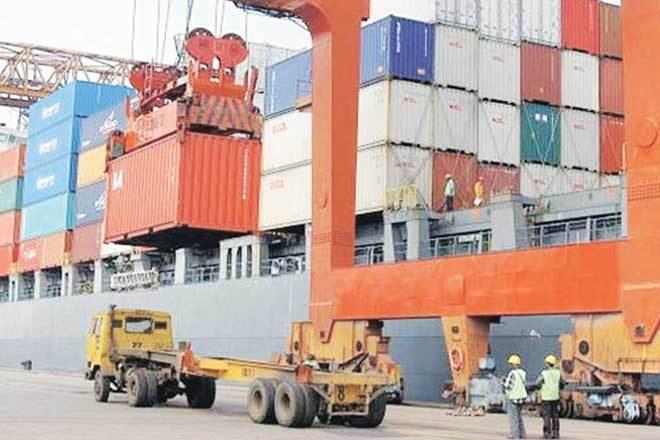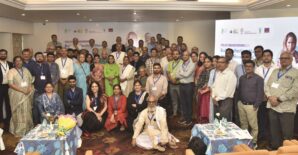Devesh Roy and Manika Sharma
 A recent Lancet study regarded dietary factors amongst the biggest risk factors for death and disability in India. Healthier, safer and more nutritious diets are keys to fighting high levels of under-nutrition and rising levels of obesity in India. Indian diets are indeed changing.
A recent Lancet study regarded dietary factors amongst the biggest risk factors for death and disability in India. Healthier, safer and more nutritious diets are keys to fighting high levels of under-nutrition and rising levels of obesity in India. Indian diets are indeed changing.
What characterizes Indian diets? Indian diets are typically low on proteins – both animal and plant-based, fruits and vegetables; 57% calories in rural and 48% in urban areas come from cereals. This is combined with high consumption of unhealthy fats and processed food and the trend cuts across income levels and rural-urban divide. The Indian diet falls short of the recent recommendations made by the EAT Lancet Commission for healthy and sustainable diets as well as the benchmarks by National Institute of Nutrition (NIN). Between 1993-94 and 2011-12, only significant change in the percentage share of calories has been for cereals (decrease by 10%) and oils and fats (increase by 3.5%).
Most noticeably, there has been almost no change in the shares in consumption of pulses, nuts, vegetables, fruits, meat, eggs and fish notwithstanding rising income levels, urbanization and other lifestyle changes. This lack of diet diversity and consumption of unhealthy calories is compelling enough to spur a concerted move towards getting the diets right.
Getting diets right is incumbent upon getting the markets right. This requires looking at diets in the broader context of a food system. The availability, affordability and access to healthier diets depends on more than just choices being made by individuals and families. It depends on the food that is being produced, processed and marketed for consumption, which in turn is sensitive to multiple systemic drivers. While the role of agriculture, health, education, social welfare, women empowerment, energy, water, and environmental policies are justly recognised as levers in the food system, one node that is critical but less emphasized are trade and other economic (taxation, industrial) macro level policies. A change like GST can certainly impinge upon the food system with system wide foot prints. Trade influences the four pillars of food security – availability, accessibility, stable supply and utilization. Beyond food security, these can be leveraged for nutrition security as well.
Both domestic and international trade policies have been used assiduously for controlling increases in relative price of food where there is little political appetite for price rise in cereals, sugar, pulses and vegetables (particularly onion). With trade policies, often the incentive effects in production and consumption get overlooked. The greatest example of trade policy and diets connect is the liberalization of edible oil imports in 1992 when it was taken off the negative list. Almost immediately the cheapest edible oil i.e. palm oil from Indonesia and Malaysia became the main source of consumption with drastic reduction in prices and ubiquitous increases (household consumption, processed food and eating out) in consumption. On the production side, cheapest oil has only further depressed production of oilseeds by Indian farmers.
Analysis of NSS consumption data shows vanaspati with the maximum share in total fat intake, reaching 50% of total intake in both rural and urban areas by 2009. Palm or palm olein oil are the main ingredients of vanaspati i.e. high in trans fats, consumption of which is associated with the risk of cardio-vascular diseases. Other oils also blend palm oil to keep their prices competitive. World Health Organization now recommends elimination of industrially produced trans-fat from global food supply and the Food Safety and Standards Authority of India in 2018 has committed to reducing trans fatty acids to less than 2% by 2022.
Domestic trade policies reinforce or offset the effects of international trade policies. Why in the Indian food markets the presence of fruits or animal source foods is patchy while unhealthy snacks or eating out options are omnipresent? Domestic food markets are characterized by unhealthy foods crowding out good food because of both demand and supply side factors. In this outcome, policies have a large part to play ranging from cereal centric price support, unregulated promotion of food processing and marketing regulations. Only recently some states have started delisting fruits and vegetables from APMC and e-NAM does not seem to have taken off for perishables at all. In addition, the incentives for cold chains have not been large enough to make any sizable difference to availability of perishables.
Finally, a big part of the food system in India and domestic trade comprises public programs like the Public distribution system (PDS) of cereals mainly wheat and rice with state specific additions like coarse cereals or pulses in the portfolio. Improved access to grains for the poor was expected to reduce malnutrition by improving food security but most surveys do not indicate adequate reduction in childhood undernutrition, anaemia and adult undernutrition. Policies need to be cognizant of the general equilibrium impacts. Dumping in markets with subsidized cereals has a huge bearing on the food system. If Bihar is self-sufficient in rice, dumping of additional 2-3 million tons due to National Food Security Act post 2013 is a fundamental impact shifter affecting cropping choices and consumption decisions. Indeed, subsidized cereals releases money to buy fruits and vegetables, animal source foods, the net effect from the perspective of healthier diets remains unclear.
It is important to step away from the reactive and interventionist domestic and international trade policies aimed to alleviate short – term price fluctuations and look at long-term impact on the food environment. The food system needs to invigorate producer, consumers and others in the value chains to choose and provide healthier diets. Awareness campaigns can bear fruit only if accompanied by a conducive food environment that can transform the changes in knowledge into change in practices.
Devesh Roy is Senior Research Fellow and Manika Sharma, Project Manager, IFPRI
This article was originally published in Financial Express



